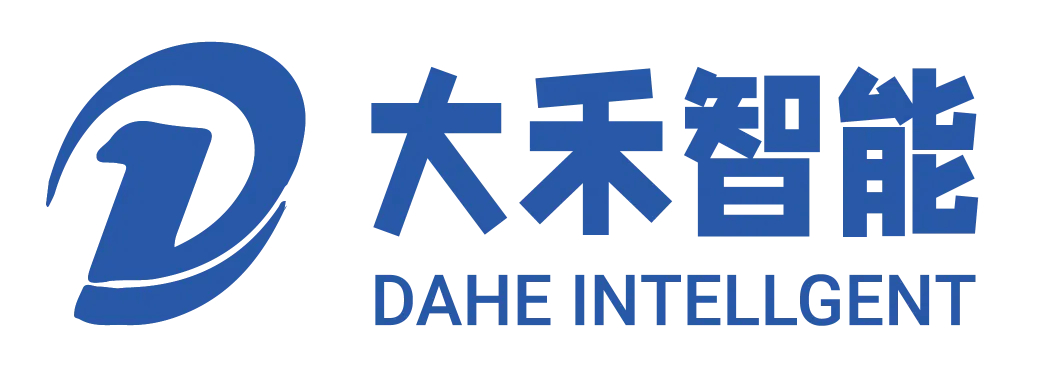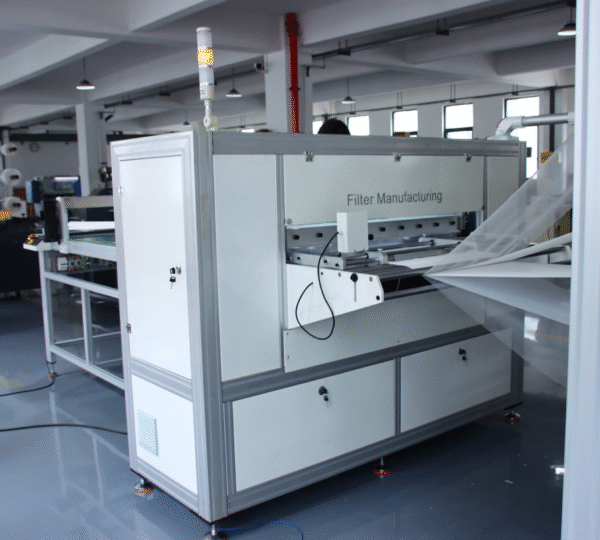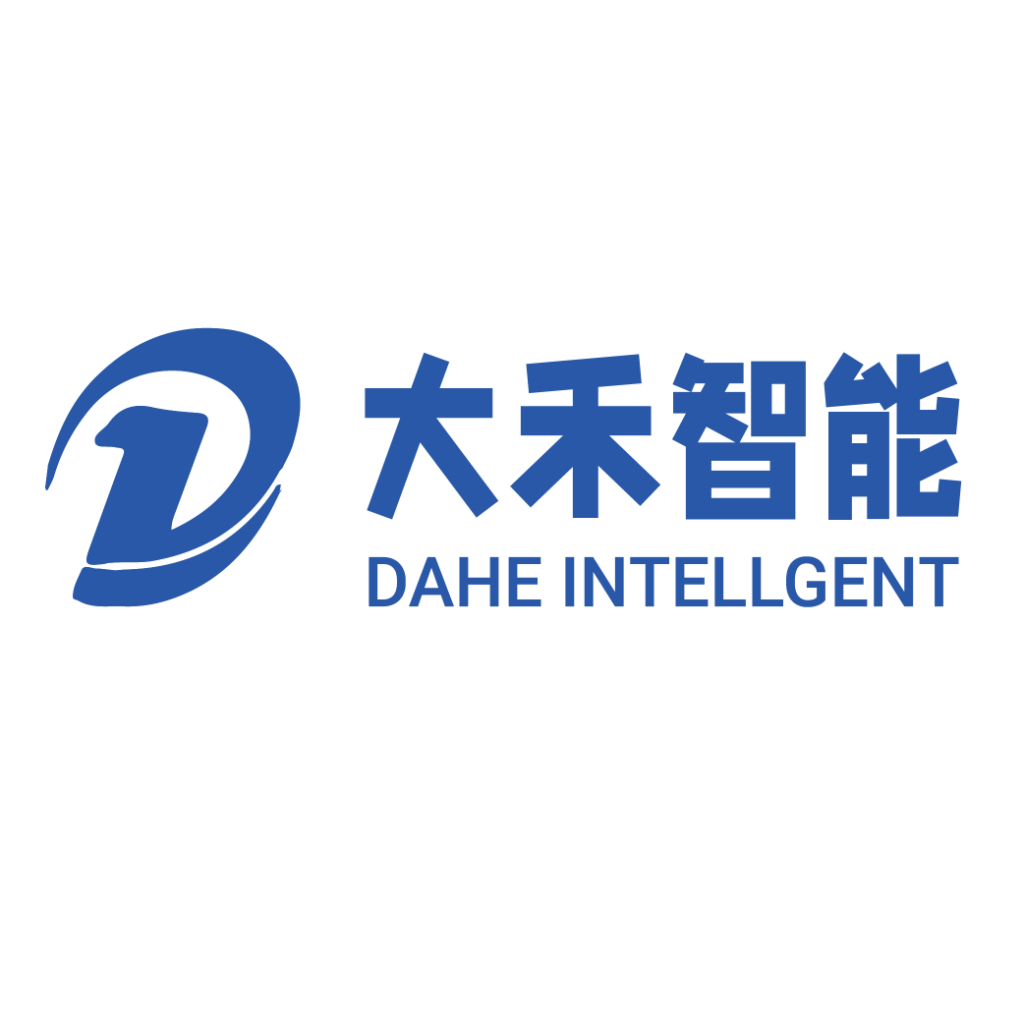Various processes come together in the HEPA filter assembly production line, from motor operation and conveyor belt movement to sensor signal checking and pneumatic adjustment. This pre-operation calibration can prepare the line for the final high-speed automated production of HEPA filters. By ensuring that each line component is finely tuned, manufacturers can eliminate downtime, avoid production errors, and ultimately improve the production efficiency of filter manufacturers. The calibration process detailed in this article focuses on the commissioning before the production line is officially put into operation.
HEPA Filter Assembly Production Line: comprehensive motor and cylinder operation commissioning
The key first step in calibrating the HEPA filter assembly production line is to ensure that the motor and cylinder’s operation is precisely synchronized. The commissioning process begins by switching the touch screen on the production console to the motor operation interface and the cylinder operation interface, respectively. Observe the mechanical movement and verify that each action meets the operating parameters.
At this stage, the operator should carefully check whether the moving parts move smoothly and align correctly. For example, when the operator sets the touch screen to the motor operation interface, the system displays real-time indicators and system status to show how the motor drives the conveyor belt. At the same time, switching to the cylinder operation interface allows the operator to control the lifting mechanism directly. This critical test ensures that the lift or assembly line responds correctly to control signals. Observations should include verifying that the lift moves smoothly without sudden starts or stops, that the lift cylinders engage and disengage consistently, and that there are no unexpected vibrations or misalignments during operation.
Inverter parameters and chain motor direction settings
The second key part of the calibration is to set the inverter operating parameters of the chain motor that drives the upper and lower chains of the production line. In this step, the operator adjusts key parameters and then starts the motor to observe and verify that it is running in the correct direction and performance. The calibration process precisely controls the movement of the chain motor and prevents any misalignments that could cause inefficiencies or even mechanical damage.
First, the operator must access the inverter settings through the control interface to set or adjust parameters such as speed, torque, and acceleration limits for the upper and lower chain motors. After defining and applying these parameters, the operator should control the motor to verify that the chain moves smoothly and rotates in the correct direction. At the same time, the operator must confirm that both the upper and lower chains run in the correct direction, as a reversal of one chain relative to the other may cause the filter assembly to feed incorrectly or even lead to a collision between moving parts.
Calibration and fine-tuning of the pre-pressing mechanism of the HEPA filter assembly production line
One of the more complex steps in the calibration process of the HEPA air filter assembly production line is fine-tuning the pre-pressing mechanism. The focus of this stage is to ensure that the folding and pressing operations of the filter assembly are correct before the final assembly. First, the technician places the installed paper frame, filter element, and the flow channel plate coated with appropriate glue into the designated pre-pressing mechanism position. The next step is to operate the automatic/manual selection switch on the pre-pressing folding mechanism.
At the same time, operators must carefully monitor each set of cylinder rods in the pre-pressing mechanism during the folding and pressing process. They aim to apply the appropriate pressure—neither too high nor too low—and to synchronize the movement of the cylinder rods precisely with the designed folding pattern. If the folding or pressing action is misaligned or uneven, it may cause improper glue bonding, misaligning the filter assembly, and even damage the delicate filter element. In addition, technicians must adjust the position of the scraper until the folding action is smooth and the pressing force is evenly distributed. This calibration phase usually involves an iterative process. The operator may need to switch back and forth between manual and automatic modes to observe subtle differences in operation.
Sensor Calibration and Signal Monitoring
Engineers embed sensors throughout the assembly line to monitor key aspects such as component positioning, temperature, and operating status. These sensors play a critical role in detecting whether any component is out of position. Whether operating manually or automatically, the system immediately alerts the operator if a sensor is misaligned or fails to detect the expected signal.
During this calibration phase, the production line is tested for sensor accuracy. The operator starts manual and automatic procedures and pays close attention to the alarm information bar on the control interface. If any sensor fails to detect its expected target, the system will display a code word and the specific workstation number where the abnormality occurred. At the same time, the system will flash the red signal light and trigger the alarm buzzer. This multi-level warning system ensures technicians can quickly identify and resolve any sensor misalignment or failure before the assembly line enters full production mode.
Adjusting Pneumatic Ducts and Lifting Operations
Another critical but often overlooked step in commissioning a HEPA air filter assembly line is properly adjusting the pneumatic ducts and lifts. This phase requires the operator to properly insert and align the ducts. Improper installation of the ducts may result in no system output signals but no cylinder movement or an irregular movement pattern, ultimately resulting in erroneous sensor readings.
During calibration, technicians must pay close attention to the insertion of the ducts. The key is to avoid reverse insertion of the ducts. The reverse connection may produce a system output signal but fail to drive the cylinder properly. Suppose the cylinder does not move as required after a preset timeout period. In that case, the system will trigger an alarm indicating that the sensor did not detect the expected rise or fall position. This alarm clearly indicates that the system requires pneumatic re-adjustment. Operators must systematically check each duct connection on the front and rear lifts to install them in the correct direction and fasten them securely.
Ensuring High Quality of HEPA Filters
This guide provides a detailed overview of the calibration and adjustment procedures required to put the HEPoperateilter assembly line into opera. Through systematic debugging – from the operation of motors and cylinders, inverter parameter settings, and adjustment of pre-pressure mechanisms to sensor calibration and inspection of pneumatic ducts, HEPA filter manufacturers can significantly improve production efficiency and ensure high-quality output of HEPA filters.





